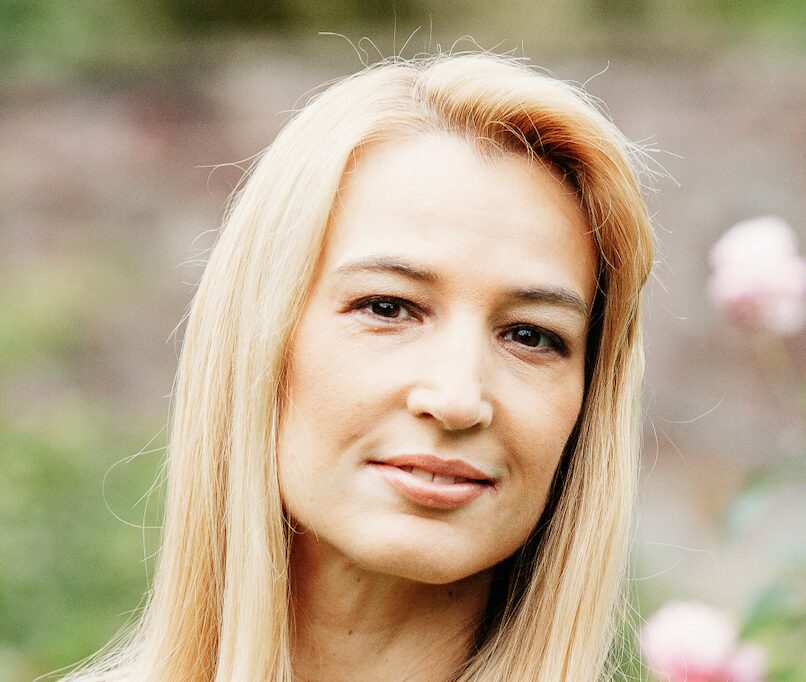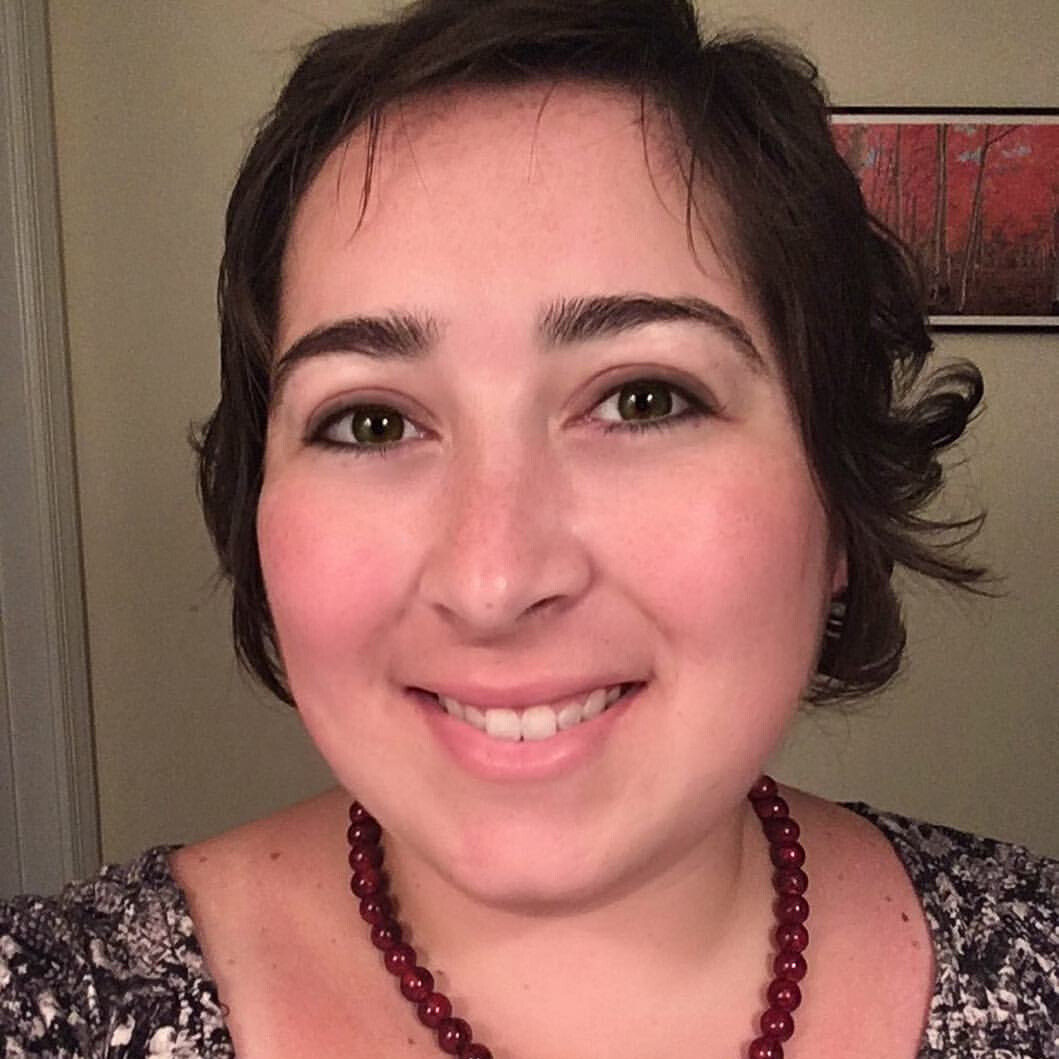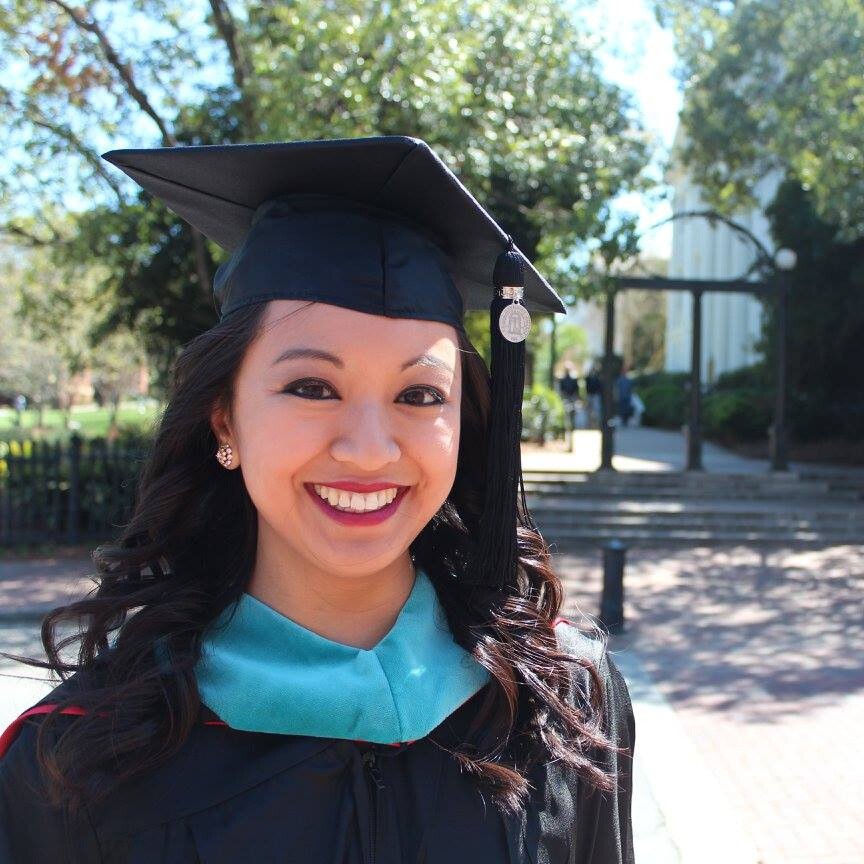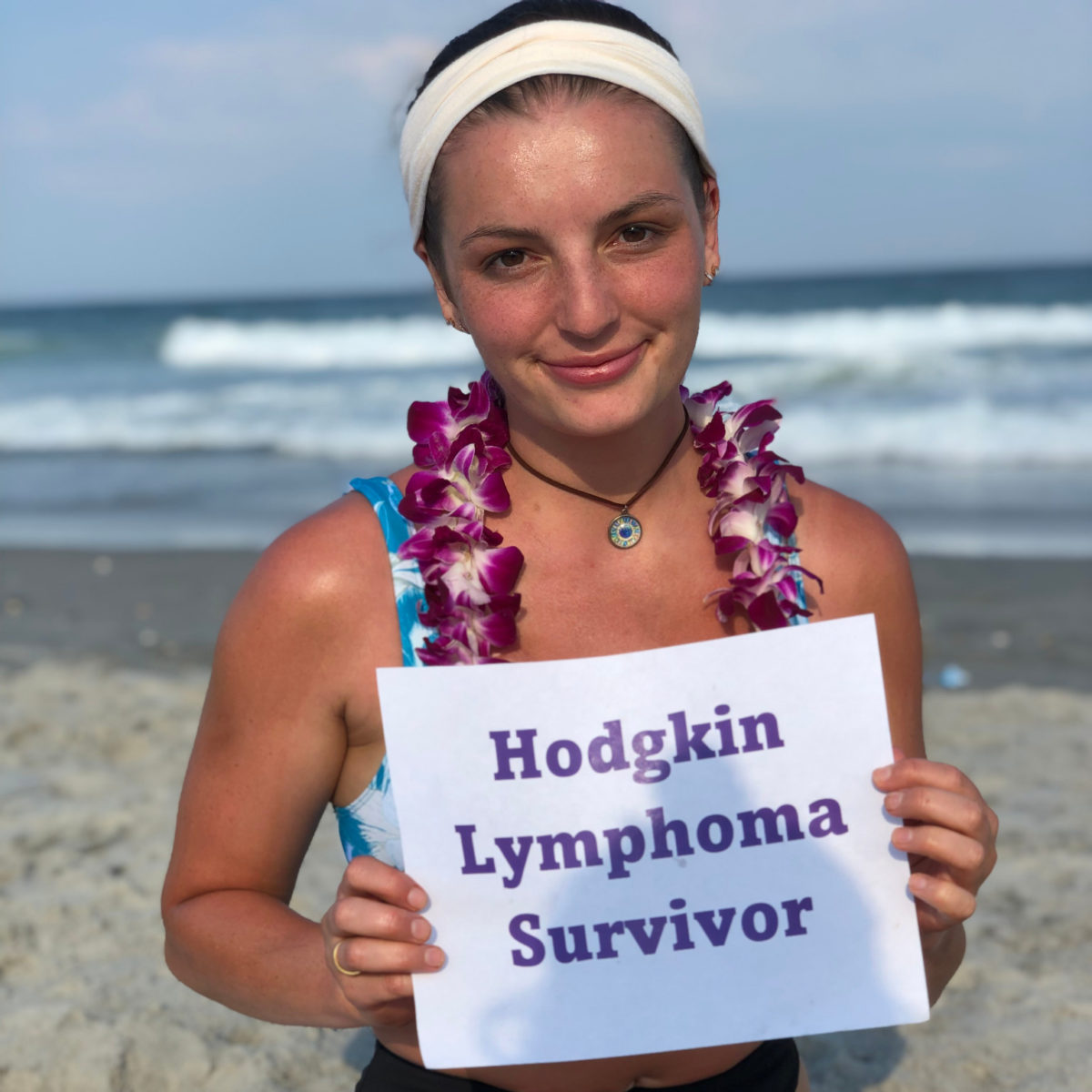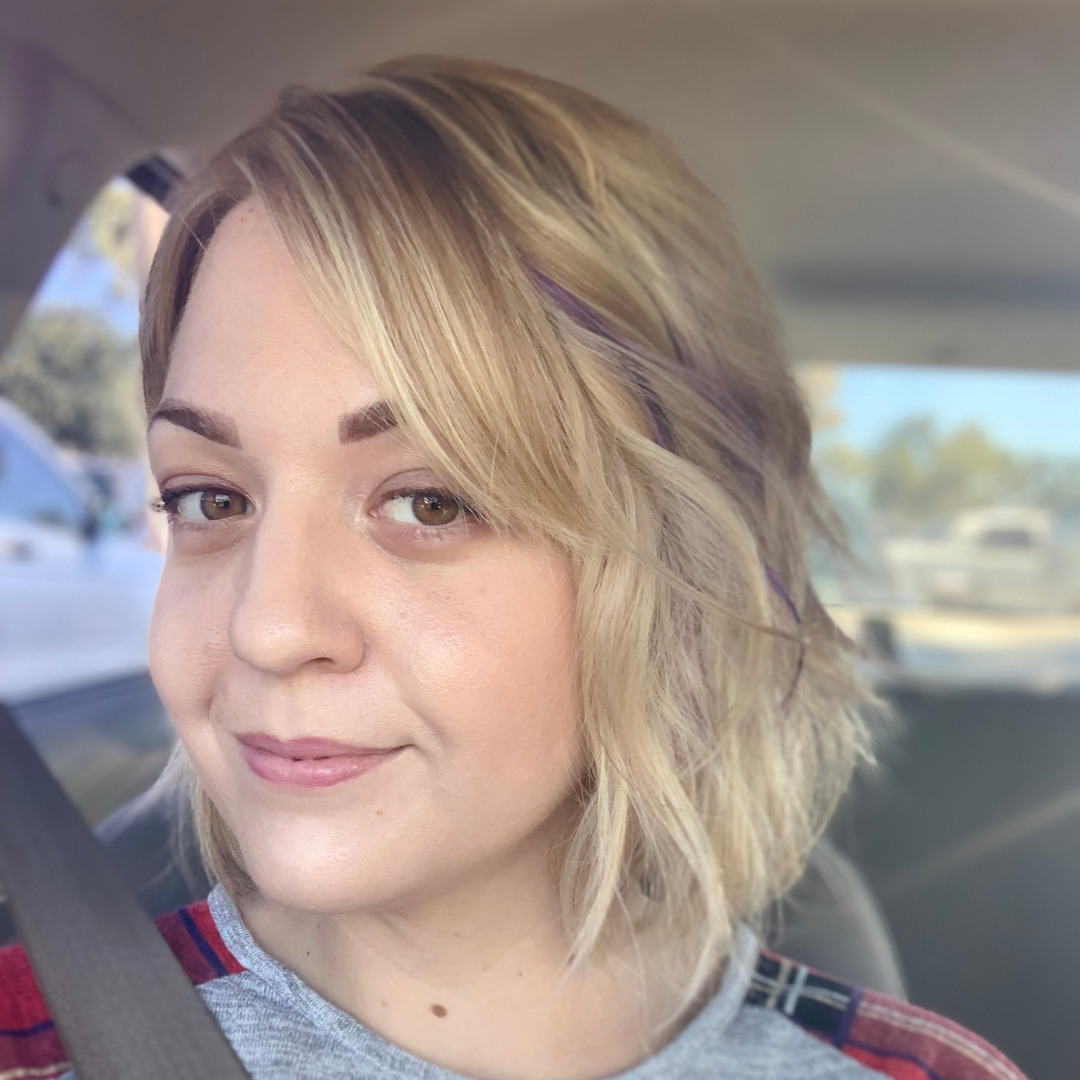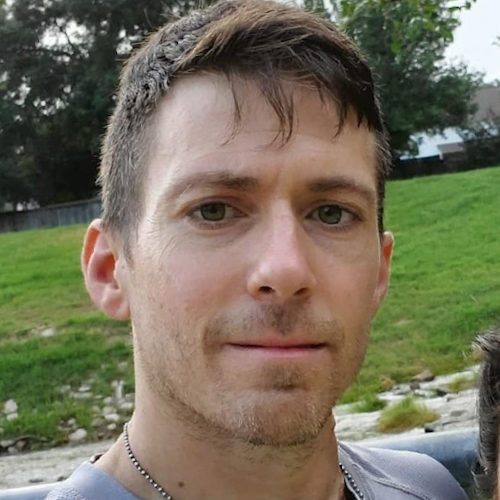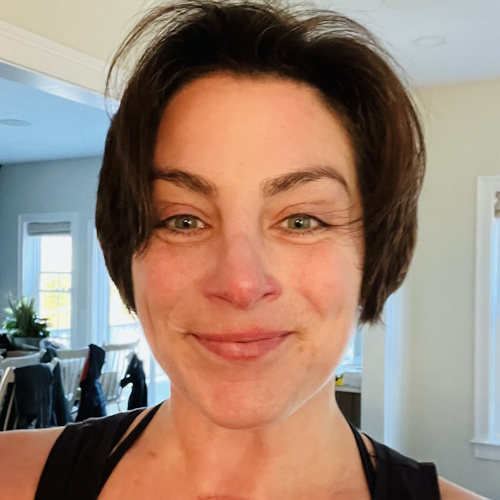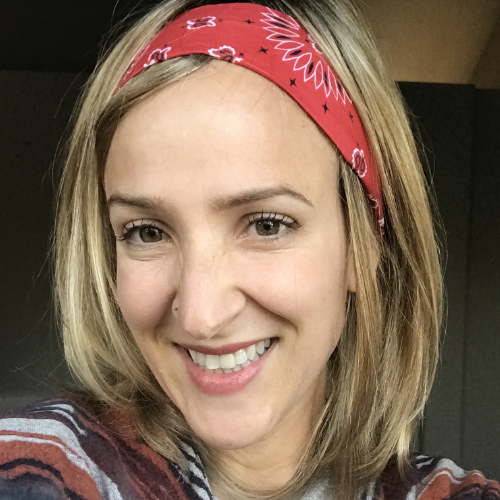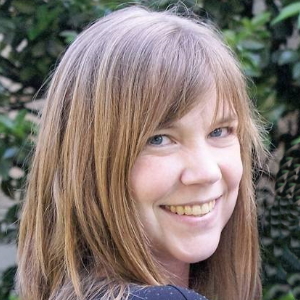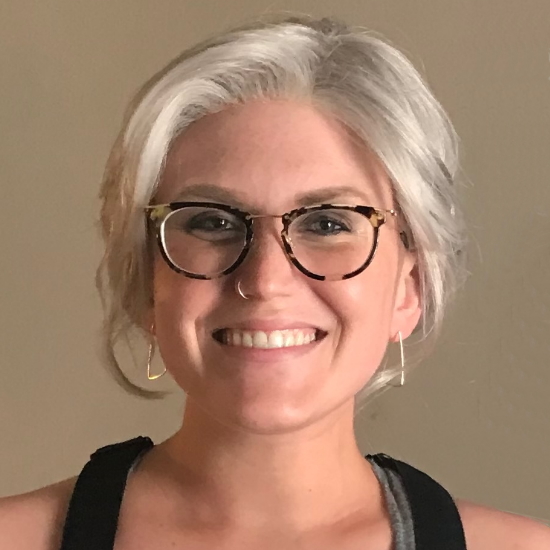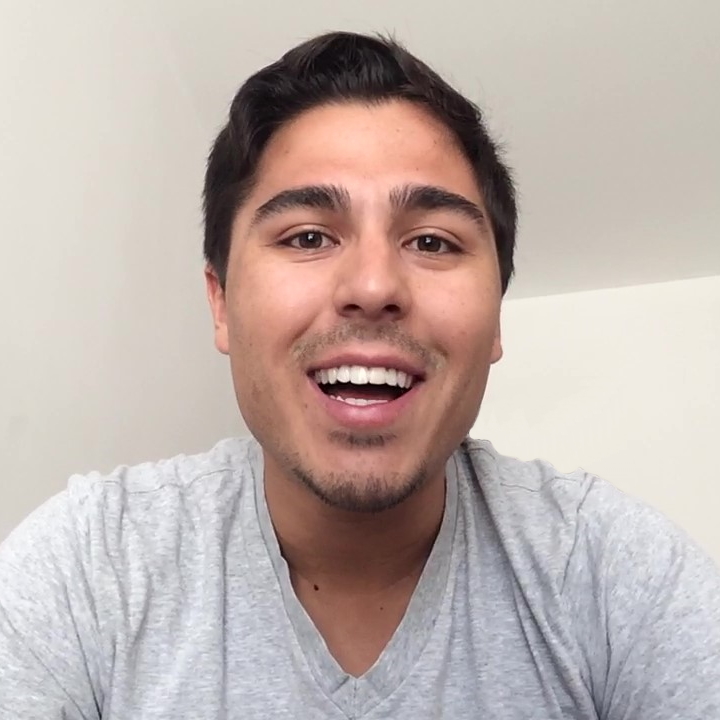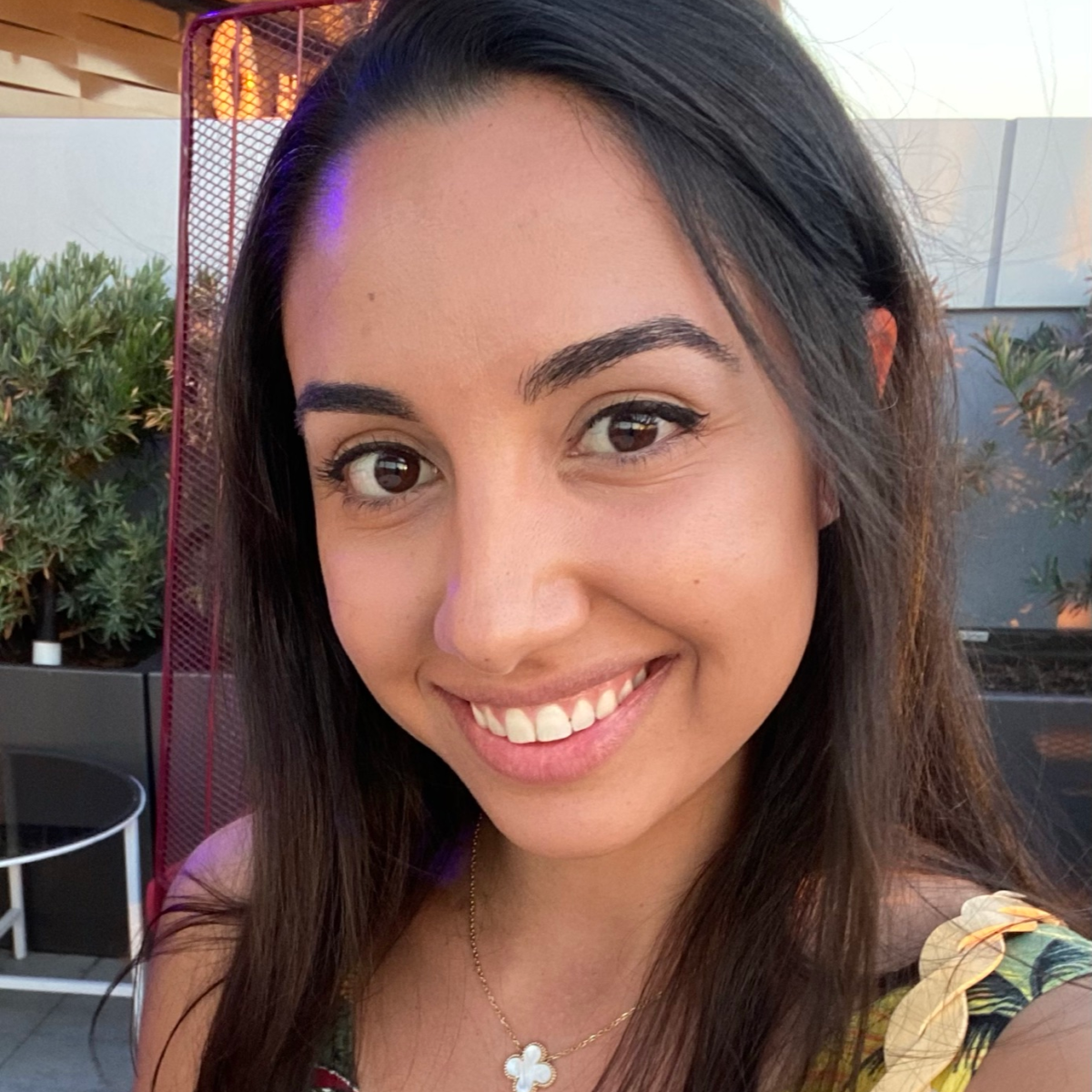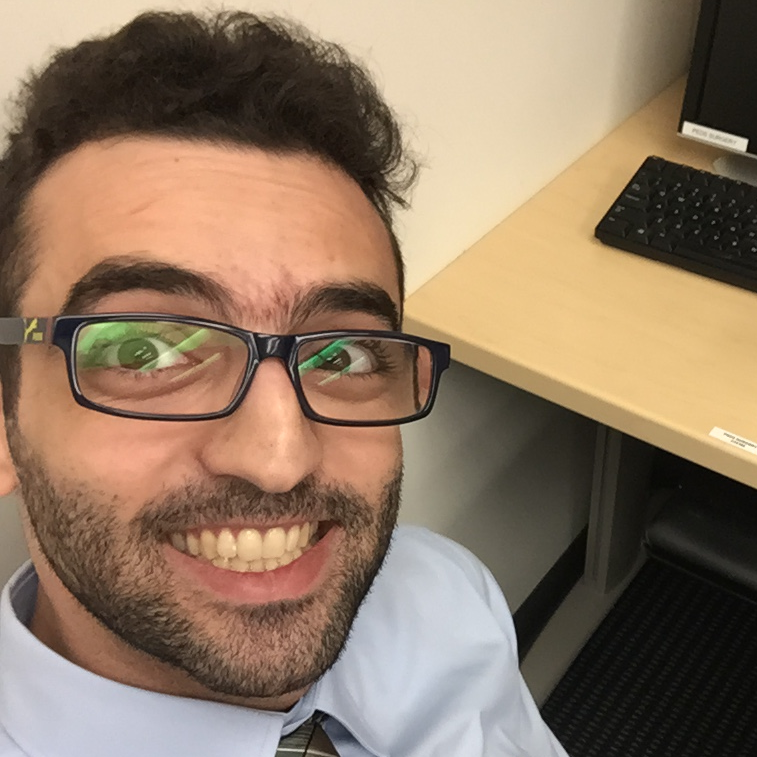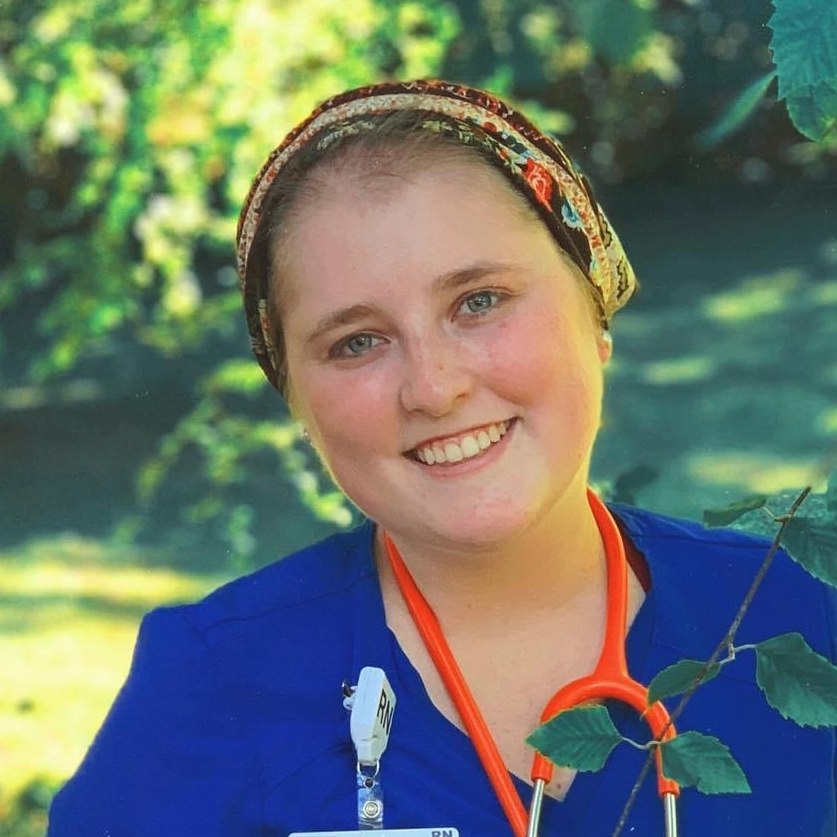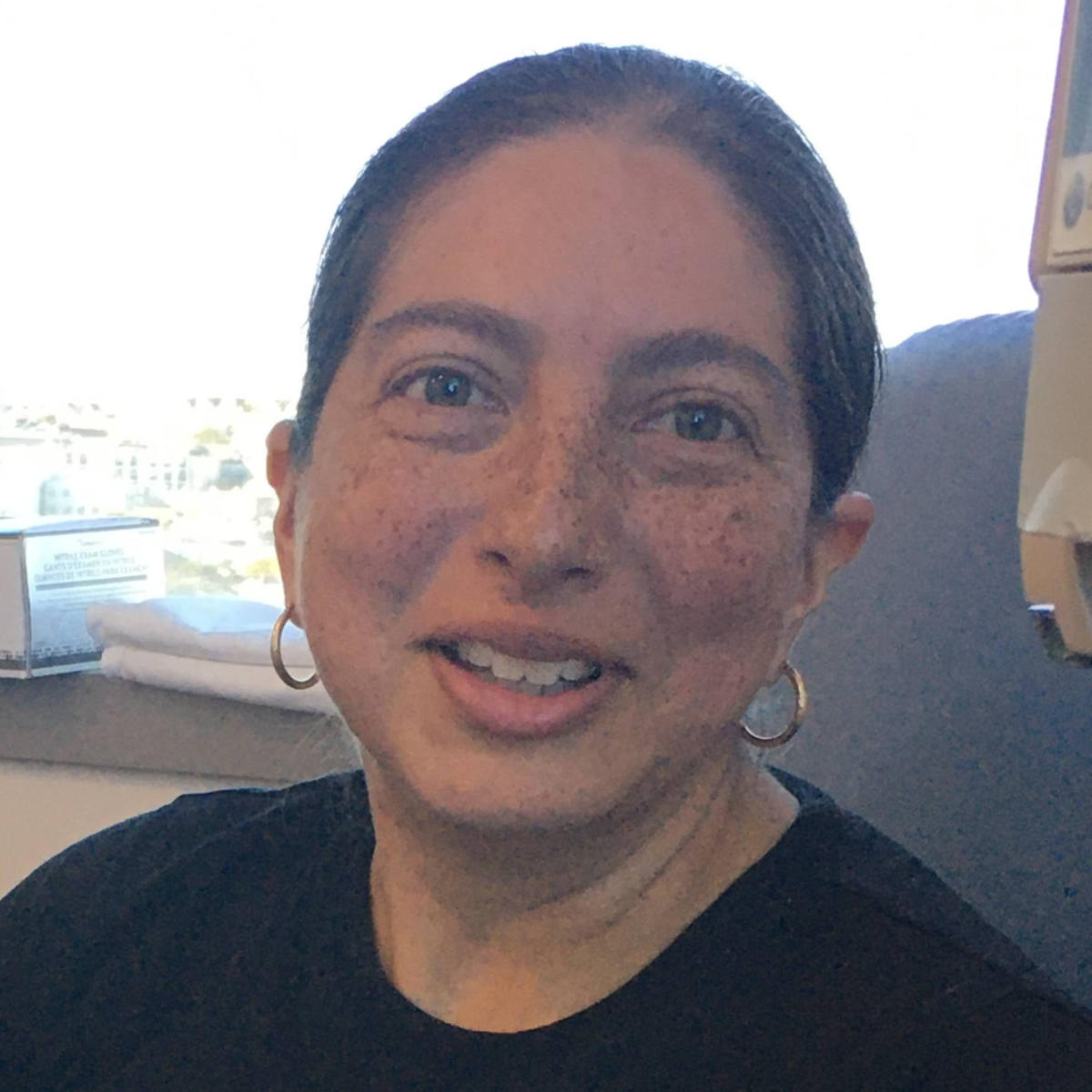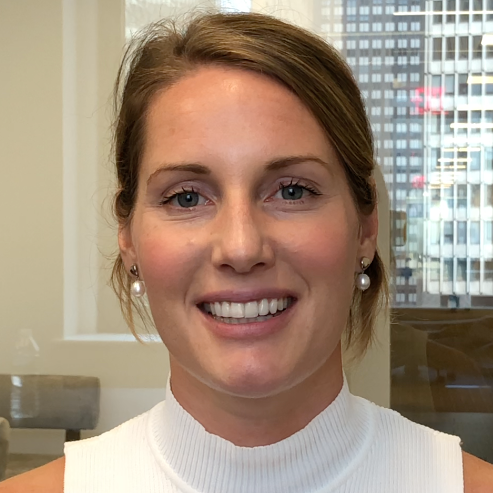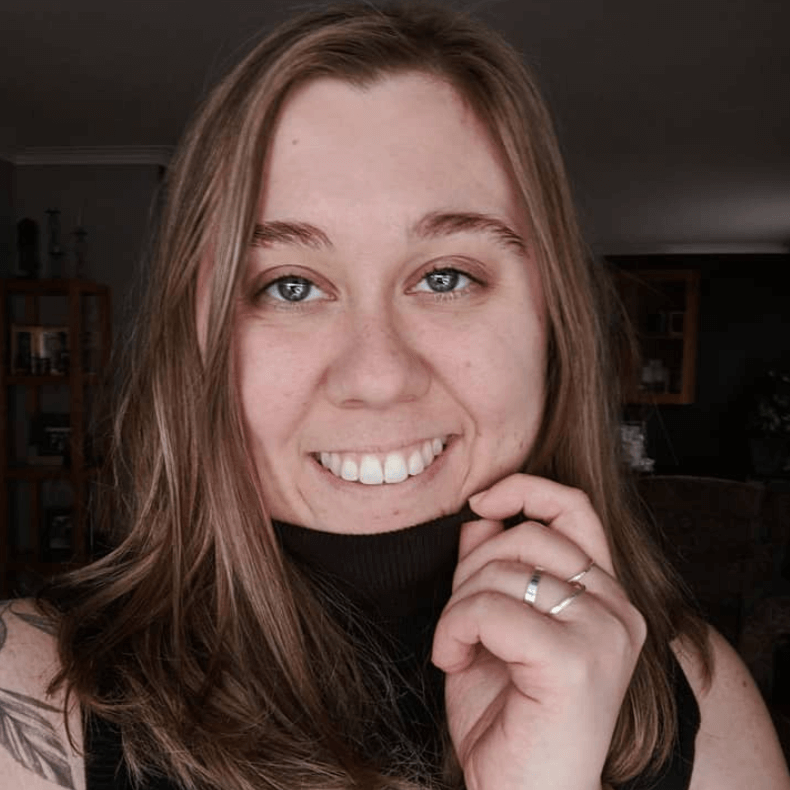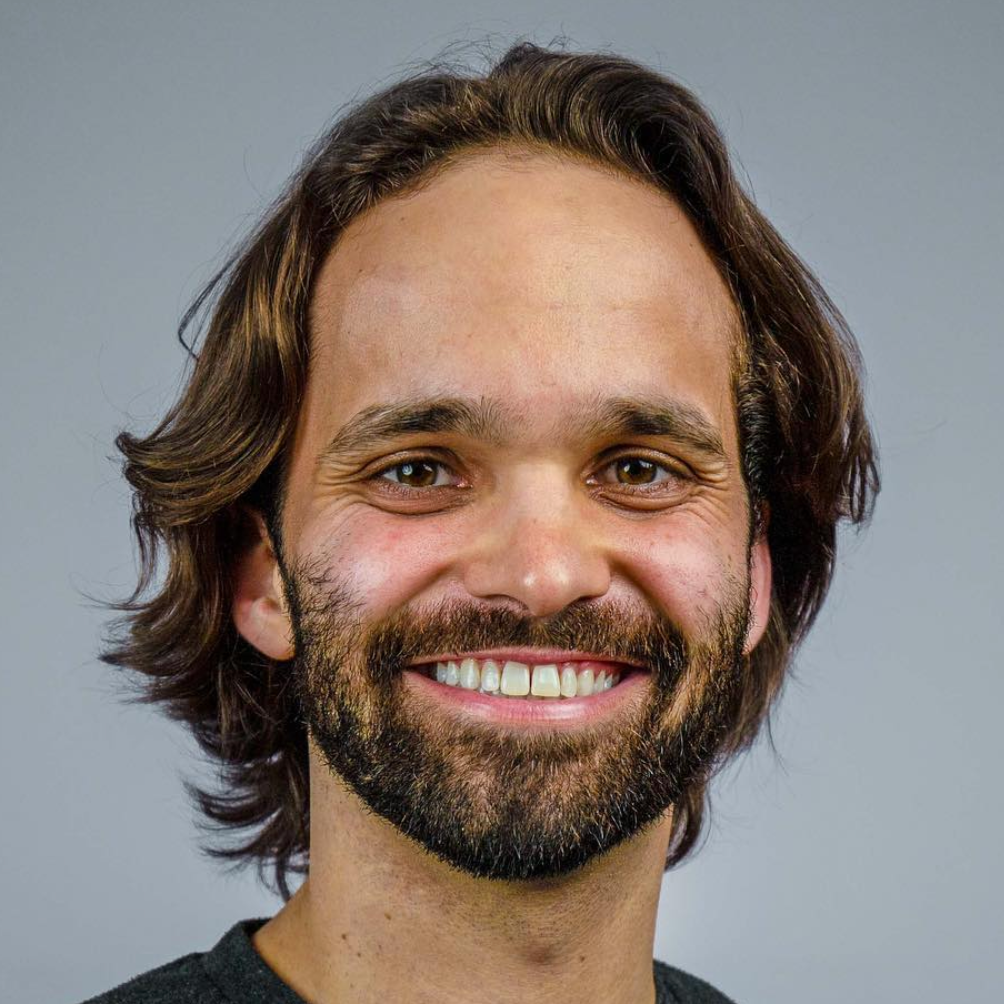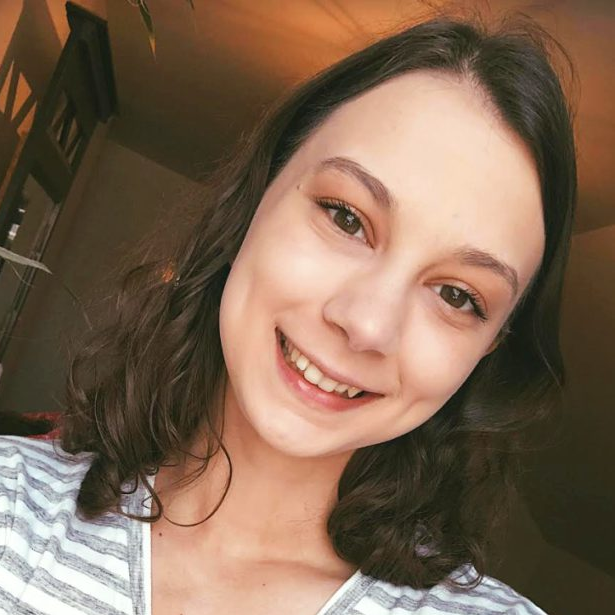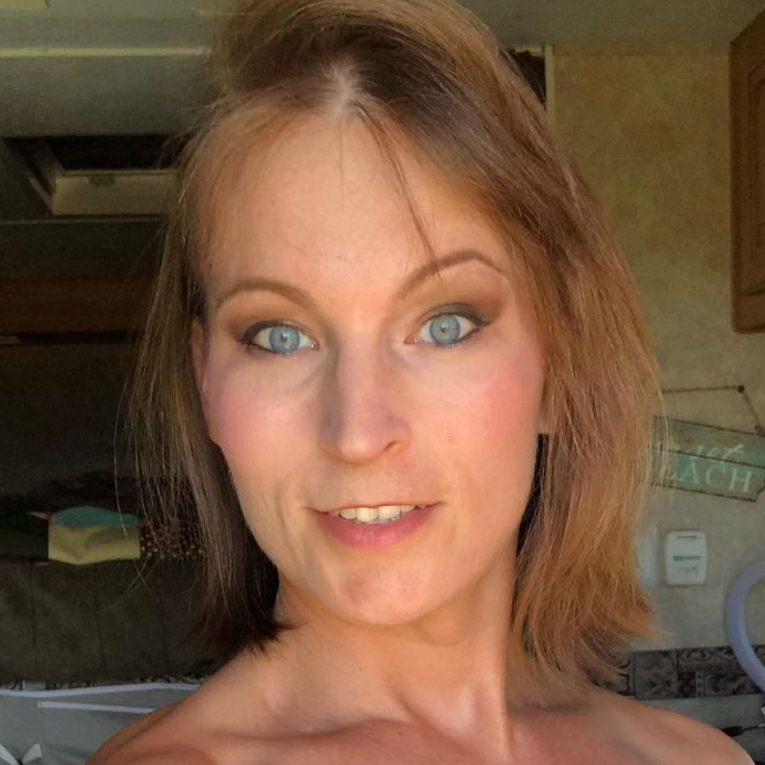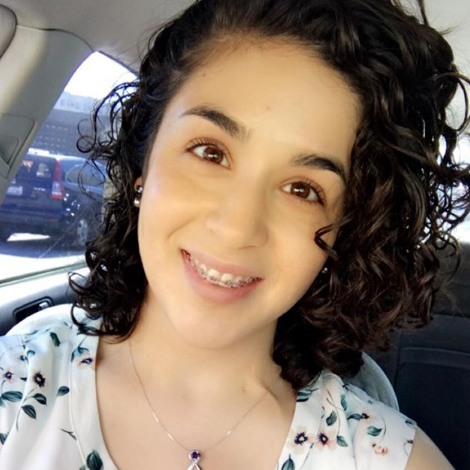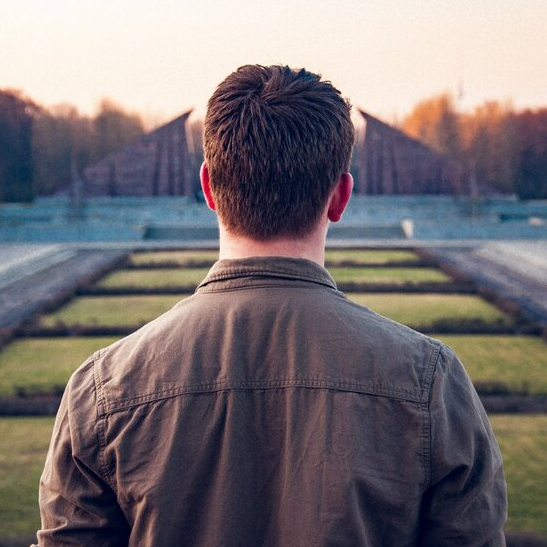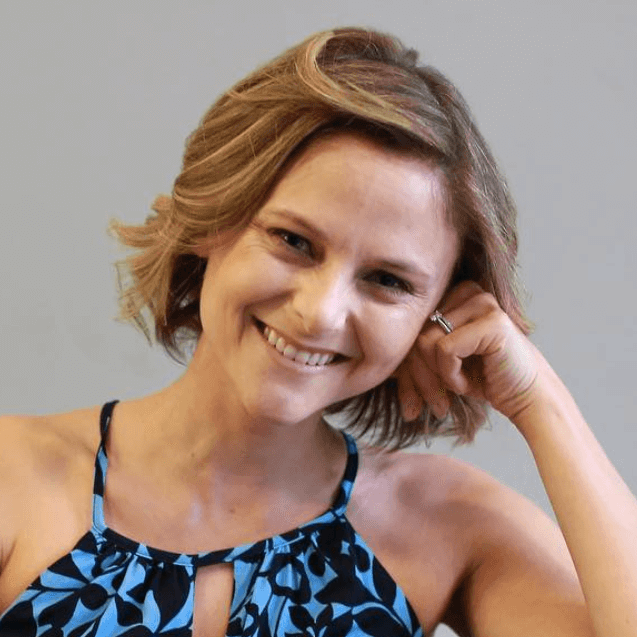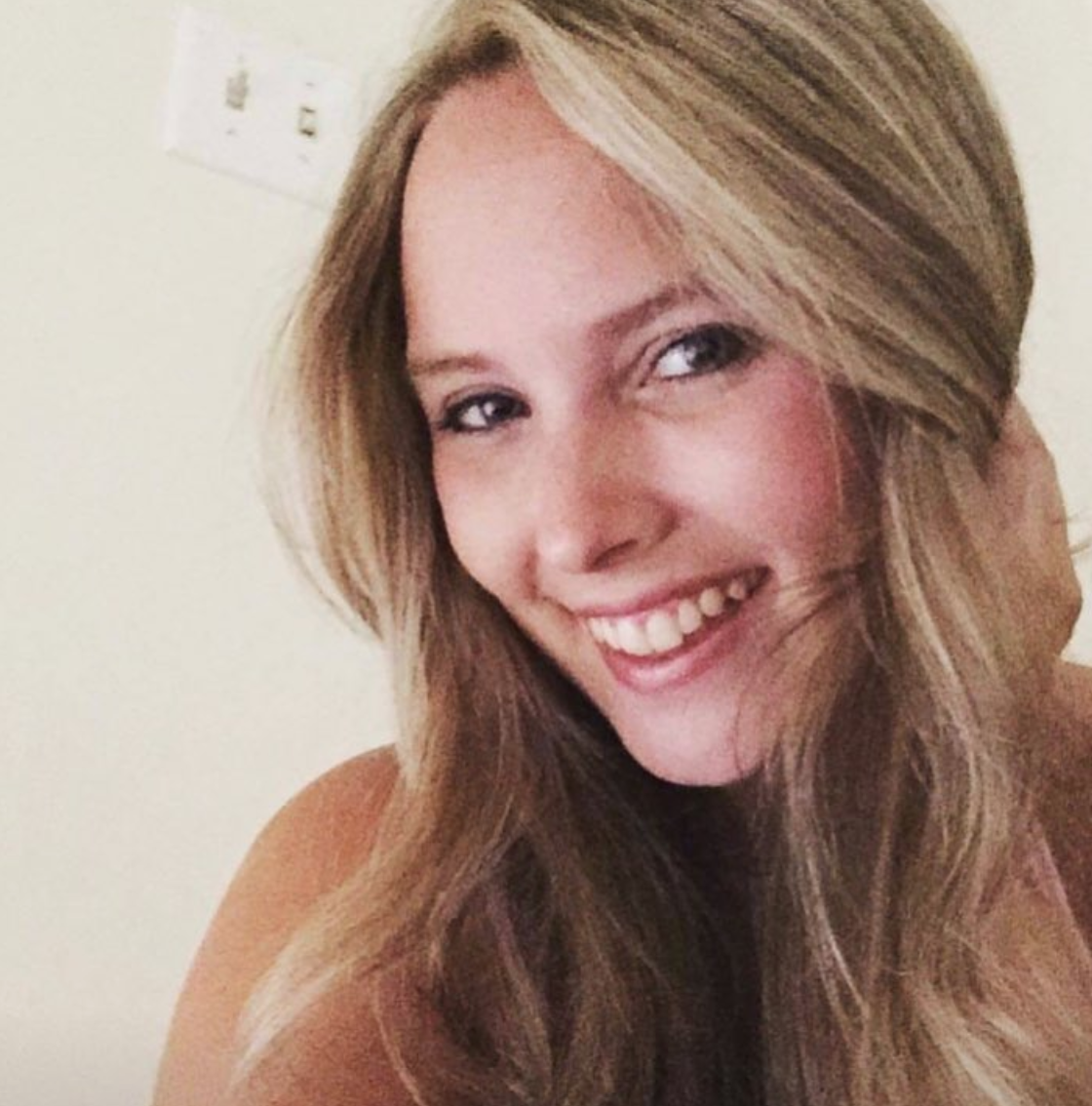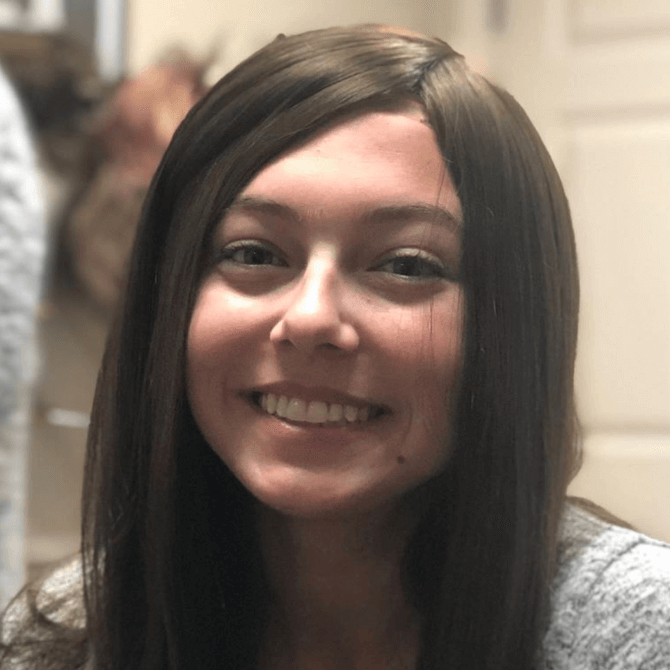ABVD Chemotherapy:
Hodgkin’s Lymphoma Treatment & Patient Stories
ABVD is a chemotherapy regimen used in the first-line treatment of Hodgkin’s lymphoma. Read on for more information about ABVD, its administration, its side effects, and more.
Also, hear directly from Hodgkin’s lymphoma patients on their experiences with ABVD chemotherapy and recovering from the regimen.
General ABVD Information
What are the medications involved in ABVD chemo?
- A – doxorubicin (Adriamycin®)
- B – bleomycin
- V – vinblastine (Velbe®)
- D – dacarbazine (DTIC)
It’s also very common to receive fluids, anti-nausea medications, as well as antihistamines like Benadryl. Your doctors and nurses will always tell you what they’re giving you. Always feel free to ask questions.
How is ABVD chemo administered?
You’ll go to an infusion center to get your infusions. ABVD chemo is much more often than not an outpatient treatment. According to MD Anderson, there are four ways chemo can be administered:
- A peripheral IV line (PIV, or just “IV”) is a short catheter that’s typically placed in the forearm. It starts and ends in the arm itself. This is what you probably think of when you think of someone getting fluids.
- A PICC line is longer than an IV, and it’s generally placed in the upper arm. Its tip ends in the largest vein of the body, which is why it’s considered a central line. PICC stands for “peripherally inserted central-line catheter.”
- A CVC is the same as a PICC line, except it’s placed in the chest or neck. CVC stands for “central venous catheter.”
- A port is a catheter that’s implanted surgically under the skin on the chest. It’s another type of central line.
Be sure to discuss your infusion options with your doctor based on your needs. lifestyle, and concerns.
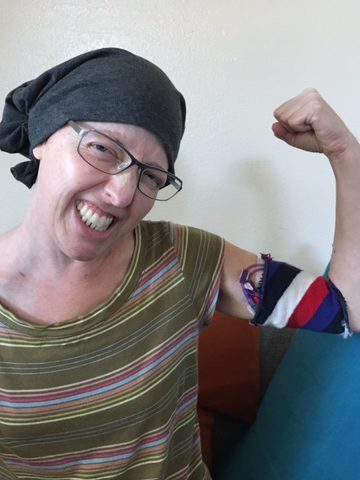
What can I expect at an ABVD infusion?
- You’ll arrive at your infusion center and check in. Depending on how busy it is, you may have to wait. Many patients suggest bringing a book, laptop or something else to keep you entertained both for any potential waiting time and for during the actual infusion itself.
- You’ll see a doctor or nurse. They’ll probably ask you how you have been feeling and maybe go over your blood work with you. If it’s your first infusion especially, feel free to ask any lingering questions you may have.
- Your infusion will begin.
- Your nurse will give you doxorubicin (it’s red; don’t be alarmed) first with a drip to flush it through.
- After this, you’ll have vinblastine as a drip over 5 to 10 minutes.
- You’ll then have dacarbazine as a drip over at least 30 minutes.
- You’ll end with bleomycin either as a drip over about 30 minutes or as a slow injection into your vein, with a drip to flush it through.
How long does ABVD treatment last?
A common treatment timeline is 6 cycles of ABVD. This can vary depending on your staging and overall health. Each cycle looks something like this:
- Day before infusion – You’ll get blood work done to make sure white blood cell counts are in an acceptable range.
- Day 1 is the first day of your cycle – This is your first round or infusion of chemo. It can last anywhere from 2 hours to all day, depending on your wait time, infusion center size, how your body responds to the medication, and other factors.
- Rest – ABVD patients usually get two weeks off between infusions to recover. You’ll probably start to feel better around Day 5-7.
- Day 15 is your second infusion day – This is the same as your first infusion unless your doctor alerts you to a change in your protocol.
- Rest – Two more weeks of rest, and you’ve finished your first cycle!
This means you can count a month or so for each cycle of ABVD. You may have to pause a week if your counts drop too low, but it’s a good thing to wait for them to come back up. Generally, though, 6 cycles of ABVD = ~6 months.
ABVD Side Effects
Signs of allergic reaction to ABVD
As with any drug, there is the risk for allergic reaction. Be sure to tell your doctor if you experience any signs of allergic reaction during your infusion. These signs include, but are not limited to:
- feeling hot or flushed
- skin rash
- shortness of breath
- swelling of your face or mouth
Other potential side effects during infusion:
- metallic taste
- burning sensation
- the need to urinate
- unsteadiness, dizziness
Whether you think you’re having an allergic reaction or not, you should always bring up any sensations to a nurse or doctor. If something is too uncomfortable during infusions, they can sometimes adjust your dosage or even stop a medication altogether, depending on your situation. It’s always better to say something.
What are the possible side effects from ABVD chemo?
Common side effects of ABVD:
- fatigue
- appetite changes, including cravings or food aversions & nausea
- hair loss (more below)
- “chemo brain” (difficulty focusing, formulating or finishing thought processes, etc.)
- neuropathy
- skin or nail changes
- urine discoloration
- emotional effects including isolation, loneliness, depression, or anxiety
To help cope with these side effects, many patients and doctors recommend:
- Allowing yourself to rest both mentally and physically
- Walking around if you feel like it – light exercise can do wonders (Always check with your doctor first!)
- Drinking plenty of water
- Following any dietary instructions given by your doctor
- Holistic treatments in conjunction with chemotherapy
- Finding a support system
Will I lose my hair on ABVD?
Hair thinning or total hair loss is possible and almost always occurs with ABVD chemo. Hair usually starts falling out around your second infusion, or about two weeks into your treatment.
Hair will start to shed more and eventually it will start to come out in clumps. Something many people don’t realize is this can be painful. Madi J., stage 1B Hodgkin survivor says, “When it started falling out, my hair follicles felt like they were burning. They feel like little sticks in your head poking you.”
You may also lose your eyebrows and eyelashes.
When your hair begins to fall out, depending on your viewpoint, it may be traumatic for you. Remember that it’s okay to feel sad about it. It’s part of you.
Many patients TPS has talked to feel a sense of empowerment from shaving their heads when it starts to fall out. It can give you a sense of control in an otherwise helpless situation. Others let it fall out on its own. Both are totally acceptable. Just be careful that it doesn’t get matted, which can be uncomfortable.
Does ABVD cause infertility?
Your oncologist will almost always bring up fertility in your first meeting about chemotherapy treatment. If they don’t, you can ask, “Will this treatment affect my fertility?”
The American Society of Clinical Oncology’s response to that question is: The risk of infertility is low after ABVD chemotherapy for Hodgkin lymphoma. However, if you want to be sure, ask your doctor.
CC Webster is a stage 4 Hodgkin lymphoma survivor who didn’t have time to go through with fertility treatments before starting ABVD. She says,
“I’ve had my follow-up after treatment with that fertility doctor, everything’s fine. My eggs have not aged a day, apparently. And I have a fully-functioning, healthy system so if that brings any relief to anybody going through this, know that that’s the case with me.”
Hear from Patients and Survivors
What advice do other patients have about ABVD?
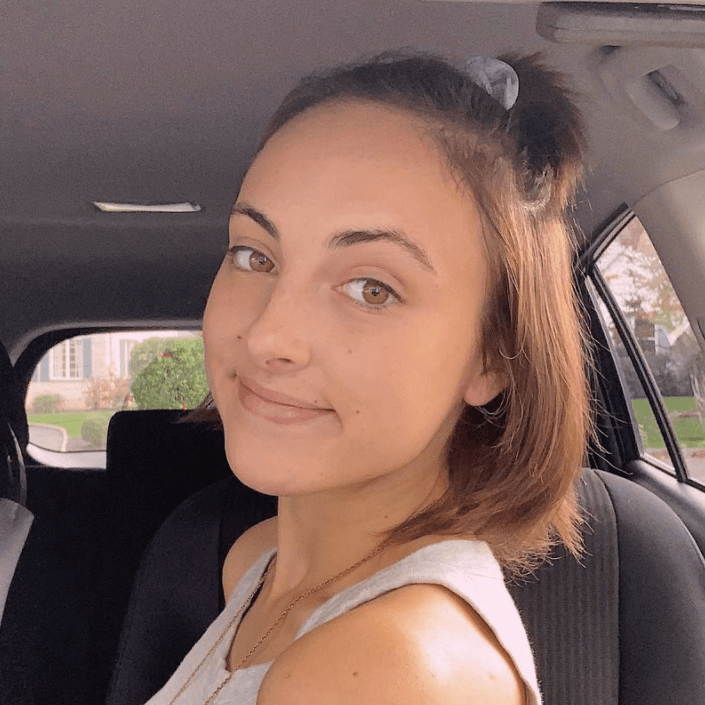
Lia S., Stage 4A:
“All of my side effects followed a cycle, which was nice. At least I knew what to expect.
The main advice I have for anyone who’s going through chemo is to write down your side effects as they happen and log them, especially in the first cycle. They’re likely to be the same throughout your treatment unless you switch drugs.”
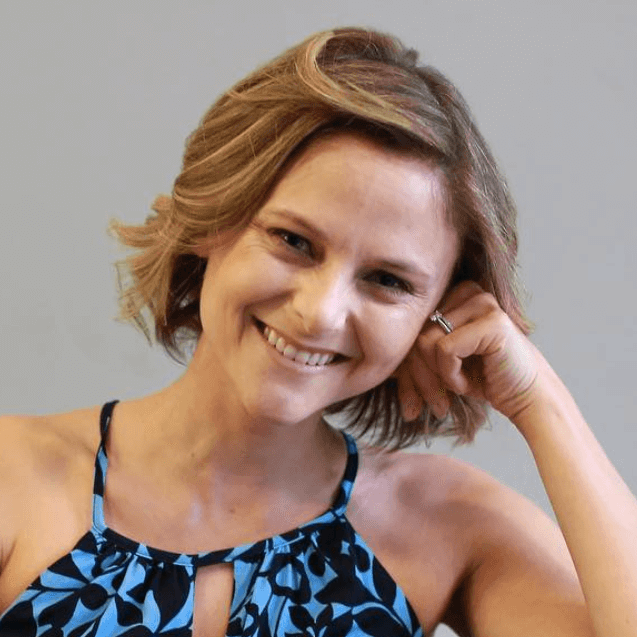
Lauren C., Stage 2A:
“Advice that I always share with folks is just stay as positive as you can. Certainly there are going to be really hard days, but try to find the silver linings and the simple pleasures – just take one day at a time. As much as you can, stay in the present moment. Very much easier said than done, but it’ll help you stay grounded. “
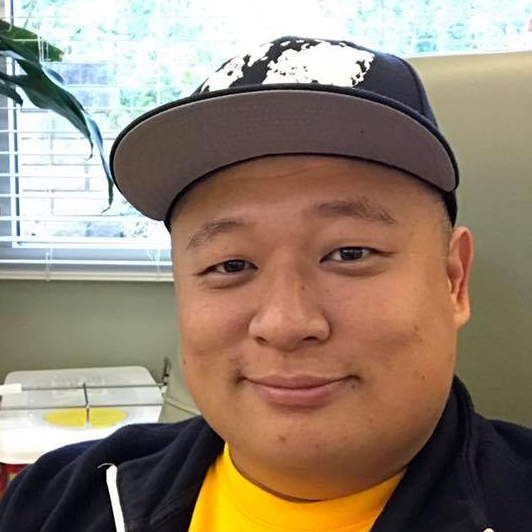
Helicon K., Stage 2A:
“To not lose heart. To fight, and to open up and invite others to journey with you through this battle.”
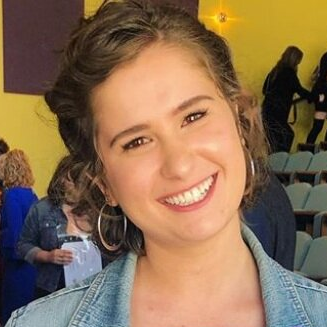
Lani S., Stage 2:
“It seems like it never going to end, but it will. It’s going to take a while to get things figured out once your on the other side of it, but you’ll be okay.
When you get done with treatment, people are going to say to you, ‘You beat cancer. You can do anything.’ What I want to say to you is, ‘You can do everything, but not because you beat cancer. You can do it because you are a human being, and you have license over your life.’”
All ABVD Patient Stories
Rachel E., Hodgkin, Stage 4
Symptoms: Extremely itchy rashes, nausea, nosebleeds, severe fatigue
Treatment: ABVD chemotherapy, steroids, dexamethasone, acyclovir, antivirals therapy
Symptoms: Itchy feet, legs & torso, sleeplessness, bad cough, lump on neck Treatment: Chemo, immunotherapy, bone marrow transplant
Patrick C., Hodgkin’s Lymphoma, Stage 2B
Initial Symptom: Dry cough, difficulty breathing
Treatment: Chemotherapy (ABVD)
Samantha S., Relapsed Hodgkin’s
Symptoms: Fatigue, cough, enlarged lymph node
Treatment: ABVD chemotherapy (later changed to AVD), Brentuximab, Cyclophosphamide, BEAM chemotherapy, autologous bone marrow transplant
Manda M., Relapsed Hodgkin’s, Stage 2B
Symptoms: Loss of menstrual cycles, iron deficiency, itching, night sweats, tiredness, night terrors, trouble breathing, difficulty concentrating, enlarged lymph nodes
Treatment: ABVD chemotherapy, radiation, ICE chemotherapy, bone marrow transplant
Kelsey R., Hodgkin’s, Stage 2A
Symptoms: Bad leg itching with no rash, enlarged lymph nodes
Treatment: ABVD chemotherapy, radiation
Emmanuel S., Relapsed Hodgkin’s
Symptoms: Enlarged lymph nodes
Treatments: Chemotherapy: ABVD, ICE; autologous stem cell transplant; Targeted therapy: Brentuximab
Nicole M., Hodgkin's, Stage 4
Cancer details: Staged 2 then 4 after second opinion
1st Symptoms: Extreme fatigue, persistent itching on lower half of legs
Treatment: 6 cycles (12 infusions) chemo, ABVD then AVD (dropped bleomycin)
Moe C., Hodgkin's, 2B, Relapse
Cancer details: Diagnosed at 19, relapsed before remission
1st Symptoms: Fatigue, weight loss, night sweats
Treatment: ABVD chemo, DHAP chemo, MINE-R chemo, splenectomy, autologous bone marrow transplant
Mara T., Stage 2BX (Bulky)
1st Symptoms: Shortness of breath, back pains, daily migraines
Treatment: 3 rounds of ABVD, 3 rounds AVD, Radiation
Topics: Self-advocacy, mental health
Erica H., Hodgkin's, Stage 3B
Cancer details: Staged at 3B
1st Symptoms: Intense itchiness, fatigue, night sweats, weight loss
Treatment:ABVD chemotherapy, 6 cycles (12 infusions)
Lia S., Nodular Sclerosis, Stage 4A
Cancer details: Most common and most treatable form of Hodgkin's lymphoma
1st Symptoms: Extreme lower back pain
Treatment: ABVD chemotherapy
CC W., Hodgkin's, Stage 4
Cancer details: Diagnosed at 29, misdiagnosed as mono
1st Symptoms: Achiness, extreme fatigue, reactive rash on chest and neck. Later: chills, night sweats
Treatment: ABVD chemotherapy (6 cycles)
Kayla T., Hodgkin's, Stage 3A
Cancer details: Possibly misdiagnosed the first time; later diagnosed as grey zone lymphoma
1st Symptoms: Pulled muscle in chest
Treatment: ABVD chemo, radiation, high-dose chemo, stem cell transplant
Tylere P., Hodgkin, Stage 3
Cancer details: Mother is a nurse practitioner; suspected cancer
1st Symptoms: Swollen lymph nodes in neck
Treatment: Clinical trial; Chemotherapy, BMT
Jade B., Hodgkin, Stage 2X
Cancer details: Diagnosed at 21 years old
1st Symptoms: Itchy legs and feet
Treatment: ABVD chemotherapy (4 treatments), AVD (remaining treatments)
Chelsea B., Hodgkin's, Stage 2B
Cancer details: Diagnosed at 32
1st Symptoms: Lump in neck
Treatment: ABVD chemotherapy
Fabiola L., Hodgkin's, Stage 2BX
Cancer details: Stage 2 with bulky disease, relapsed after 1st chemo. Remission after 2nd chemo & bone marrow transplant
1st Symptoms: Shortness of breath, dry cough, fatigue
Treatment: ABVD chemo (6 cycles), IGEV chemo, bone marrow transplant, BEAM chemo, brentuximab
Wade W., Hodgkin's, Stage 2A
Cancer details: Diagnosed at 18 years old
1st Symptoms: Enlarged lymph nodes (around neck), diagnosed at 18 years old
Treatment: ABVD chemotherapy (2 cycles), AVD chemotherapy (4 cycles)
Lauren C., Hodgkin's, Stage 2A
Cancer details: Diagnosed at 23 years old with nodular sclerosis, relapsed after 6 months of 1st-line treatment
1st Symptoms: Itchy body, enlarged lymph node over collar bone
Treatment: ABVD chemotherapy and ICE, radiation, and stem cell transplant for relapse
Helicon K., Hodgkin's, Stage 2A
Cancer details: Found lymphoma cells in adenoid tissue
1st Symptoms: Difficulty breathing with blockage in nose, surgery to remove tissue resulted in discovery of Hodgkin lymphoma cells
Treatment: ABVD chemotherapy (4 cycles), radiation (20 sessions)
Lani S., Hodgkin's, Stage 2
Cancer details: Tumor pressing on heart
1st Symptoms: Appendicitis led to CT scan that found tumor
Treatment: ABVD chemotherapy, 7 cycles
Danielle D., Hodgkin's, Stage 2
Cancer details: Diagnosed at age 25
1st Symptoms: Swollen lump on right side of neck/chest area, continued to grow
Treatment: ABVD chemotherapy (3 cycles = 6 infusions)
Madi J., Hodgkin's, Stage 1B
Cancer details: Most common and most treatable form of Hodgkin lymphoma
1st Symptoms: Shortness of breath
Treatment: 3 rounds (6 infusions) of ABVD chemo
Sources aggregated outside TPS for this page:
